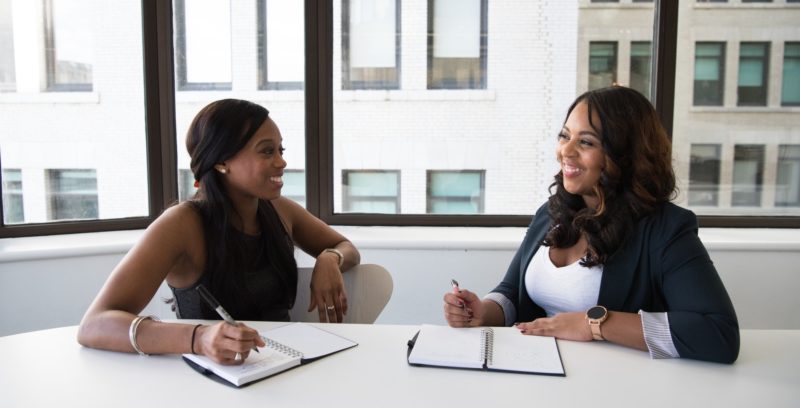Medical Administration Programs: What to Look for in a High quality Course
Finest Practices in Medical Administration for Improving Performance and Minimizing Expenses
In the ever-evolving landscape of medical care, the quest of finest practices in clinical administration is paramount for enhancing effectiveness and suppressing expenses. By integrating innovative innovations such as electronic health records and telemedicine, healthcare providers can simplify operations and improve individual care. Nonetheless, modern technology alone is not a cure all; optimizing source allotment and cultivating collective interaction among treatment teams are just as vital (medical administration). As companies make every effort to balance high quality and cost, what methods should be focused on to achieve these twin objectives? The responses to these inquiries hold the trick to a more lasting healthcare system.
Leveraging Advanced Technology
In today's quickly advancing medical care landscape, leveraging advanced technology is no longer optional however crucial for reliable medical administration. The assimilation of electronic remedies right into healthcare systems has changed the method centers operate, simplifying procedures and boosting individual treatment. Electronic Wellness Records (EHRs) are crucial, giving comprehensive patient data that can be accessed immediately by authorized personnel, therefore decreasing redundancy and reducing errors. By centralizing patient information, EHRs remove the requirement for troublesome documents and help with seamless interaction amongst doctor.
Telemedicine is one more technological advancement that has actually transformed patient communication. It offers ease for both clients and health care experts by enabling remote appointments, which can decrease the demand for in-person check outs and optimize visit organizing. Furthermore, telehealth systems can prolong healthcare access to country or underserved areas, linking gaps in care shipment.
In addition, using Expert system (AI) and machine understanding is becoming increasingly common in anticipating analytics, enabling very early discovery of potential health and wellness problems and even more informed decision-making. These innovations, when incorporated effectively, can enhance analysis precision and individualize patient treatment strategies, inevitably leading to improved health care end results and functional efficiency.
Optimizing Resource Allocation
Efficient source appropriation is important for optimizing the performance of clinical administration. By tactically handling sources such as employees, tools, and financial resources, medical care centers can dramatically enhance their operational performance, improve patient outcomes, and decrease unnecessary expenses. The initial step in optimizing resource allocation involves conducting a comprehensive assessment of existing properties and recognizing locations where sources may be underutilized or overextended. This assessment should be data-driven, making use of metrics and analytics to notify decision-making procedures.
Prioritizing source allowance based on patient requirements and service needs is vital. This involves straightening resources with high-demand areas, such as emergency care or specialized treatments, to ensure prompt and efficient patient treatment. Implementing flexible staffing designs can also maximize labor resources by readjusting personnel appropriation in feedback to changing patient quantities. Additionally, accepting telemedicine and other technological remedies can reduce physical source constraints by using alternative opportunities for patient-provider communications.
Funds ought to be carefully monitored and assigned with calculated insight to support both short-term operational needs and long-lasting institutional objectives. This consists of investing in training programs that enhance staff proficiencies and taking on energy-efficient practices that decrease operational expenses (medical administration). Eventually, a maximized source appropriation technique promotes a lasting health care atmosphere that is receptive, effective, and monetarily sensible
Streamlining Process Procedures
When medical care centers purpose to boost functional performance, simplifying operations procedures ends up being a crucial emphasis. Effective process lessen redundancy, get rid of unnecessary steps, and enhance sychronisation amongst medical care specialists. This strategy not just speeds up service delivery you can try here but additionally boosts the top quality of individual care.

Following, modern technology combination plays a significant role in simplifying process. Applying electronic health and wellness documents (EHRs) and electronic medical professional order access (CPOE) systems reduces documents, decreases human error, and guarantees details is obtainable to all relevant workers. Furthermore, leveraging telemedicine systems can improve individual consultations and follow-ups, minimizing the stress on physical framework.

Inevitably, structured operations result in read more cost reductions and improved individual complete satisfaction, promoting an extra sustainable health care atmosphere.
Enhancing Data Monitoring
Building upon structured operations, optimizing data administration ends up being a crucial part ahead of time healthcare administration. Effective information management systems are critical for preserving accurate individual records, improving decision-making, and guaranteeing compliance with regulative standards. By executing robust data management services, healthcare facilities can enhance the quality of person treatment while at the same time lowering functional prices.
One key aspect of improving data administration is the integration of advanced electronic wellness record (EHR) systems. These systems facilitate the smooth exchange of patient information across various divisions, decreasing replication of examinations and reducing mistakes. A properly designed EHR system supports information analytics, enabling doctor to identify patterns and make educated choices regarding person care.
Furthermore, guarding client data is vital. Embracing comprehensive cybersecurity procedures, consisting of file encryption and routine audits, makes certain the stability and confidentiality of sensitive information. This not only safeguards individuals but also maintains the establishment's credibility.
Investing in team training is one more essential element. Informing health care experts on data monitoring techniques enhances their capability to efficiently make use of modern technology, causing boosted person end results. In verdict, enhancing information management via advanced technology and detailed training is visit site important for achieving effectiveness and expense decrease in clinical management.
Fostering Collaborative Interaction
A crucial part ahead of time medical management is cultivating collective interaction among healthcare professionals. Reliable communication is paramount for ensuring seamless individual treatment, maximizing therapy end results, and minimizing errors. By urging open dialogue and control across multidisciplinary groups, health care companies can enhance their operational effectiveness and minimize unnecessary costs.
Central to this approach is the assimilation of interaction innovations such as electronic wellness documents (EHRs) and safe messaging platforms, which facilitate the quick exchange of vital individual information. These devices allow healthcare suppliers to gain access to and share data in genuine time, guaranteeing that all staff member are informed and straightened in their decision-making processes. In addition, normal team conferences and interdisciplinary rounds can even more advertise a culture of cooperation and responsibility.
Educating programs concentrated on improving interaction skills are additionally important. These programs can assist staff establish the capacity to communicate details clearly and listen proactively, thus decreasing misconceptions and fostering a supportive workplace. In addition, taking on standardized interaction protocols, such as SBAR (Circumstance, History, Assessment, Suggestion), can simplify the exchange of information, making sure that crucial information are shared succinctly and effectively. Inevitably, cultivating joint communication brings about improved medical care delivery and price financial savings (medical administration).

Final Thought
Integrating innovative technology, such as electronic wellness records and telemedicine, together with maximized source allocation and streamlined workflow procedures, is crucial for improving effectiveness in medical administration. Effective data administration and promoting collective communication amongst health care teams are essential for reducing redundancies and improving care high quality. By prioritizing preventive treatment and involving in high quality enhancement efforts, health care organizations can achieve significant cost savings and boosted patient end results, consequently making sure lasting medical care distribution in a progressively complex setting.